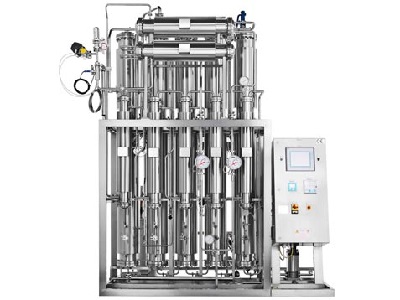In the world of water purification, multi-effect water distillers have been a stalwart technology known for their ability to consistently deliver ultra-pure water. Over the years, these systems have evolved, becoming more efficient, environmentally friendly, and adaptable to a range of industries. In this blog, we'll explore the journey of multi-effect water distillers and the innovations that have shaped their evolution.
Multi-effect distillation as a concept has been around for decades. It was initially developed as a means to improve energy efficiency in water distillation processes. The core idea was simple but effective: reuse the latent heat of vaporization from one stage to drive subsequent stages. This innovation reduced the energy required for water purification significantly.
One of the most significant advancements in multi-effect water distiller has been the enhancement of energy efficiency. Modern systems are designed to minimize energy consumption, making them more environmentally sustainable and cost-effective. These improvements in energy efficiency have been achieved through various means
Advanced Heat Exchangers
Improved heat exchanger designs enhance heat transfer efficiency, reducing the energy needed to produce steam.
Precise Control Systems
Modern distillers incorporate sophisticated control systems that optimize energy usage and maintain consistent water quality.
Waste Heat Recovery
Some systems now include waste heat recovery mechanisms, capturing and reusing heat that would otherwise be wasted.
The focus on environmental sustainability has led to the development of multi-effect water distiller that align with green initiatives. These innovations include
Reduced Chemical Usage
Many systems now require fewer chemicals for cleaning and maintenance, minimizing their environmental impact.
Carbon-Neutral Operations
Some manufacturers have committed to achieving carbon neutrality in the production and operation of their distillers.
Multi-effect water distillers have evolved to meet the needs of various industries. They are no longer limited to pharmaceutical and healthcare applications. Today, they are used in power plants, food and beverage production, electronics manufacturing, and more. Manufacturers have adapted these systems to suit the unique requirements of each industry, broadening their scope and impact.
The pharmaceutical and healthcare industries, in particular, have stringent regulatory standards for water quality. Modern multi-effect water distillers are designed with regulatory compliance in mind. They incorporate features and materials that ensure the water produced meets or exceeds industry standards.
Advancements in materials and engineering have made multi-effect water distiller more reliable and easier to maintain. Manufacturers now offer systems with reduced downtime and simplified maintenance procedures, providing greater convenience and cost savings for users.
The evolution of multi-effect water distiller is a testament to human innovation and the pursuit of excellence in water purification technology. These systems have come a long way, from their early days as energy-efficient distillers to their current state as versatile, environmentally friendly, and regulation-compliant water purification solutions. As industries continue to prioritize water quality, sustainability, and efficiency, multi-effect water distiller will remain at the forefront of water purification technology, contributing to a cleaner and more sustainable future.


